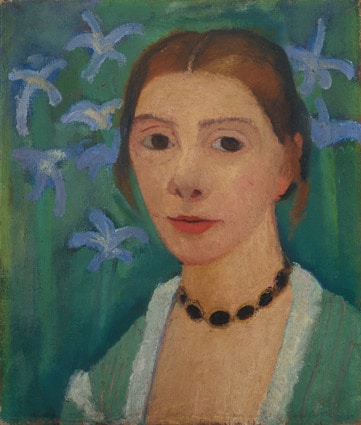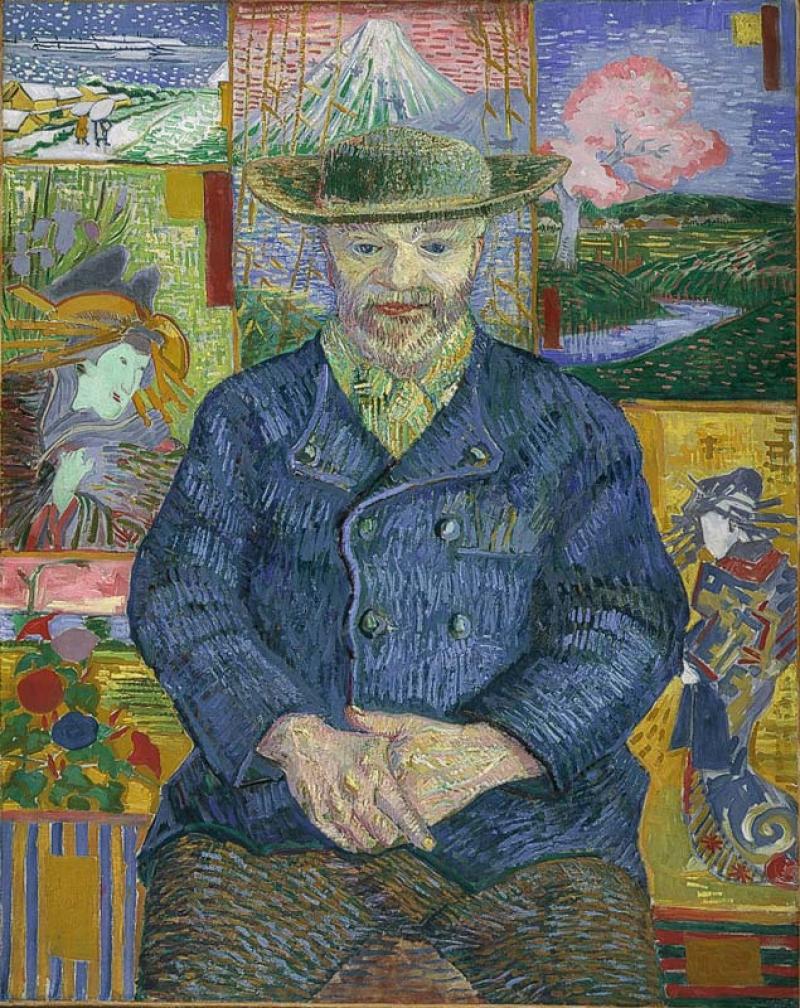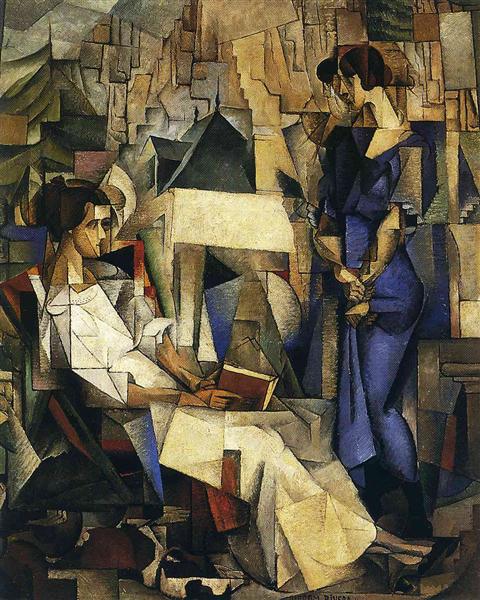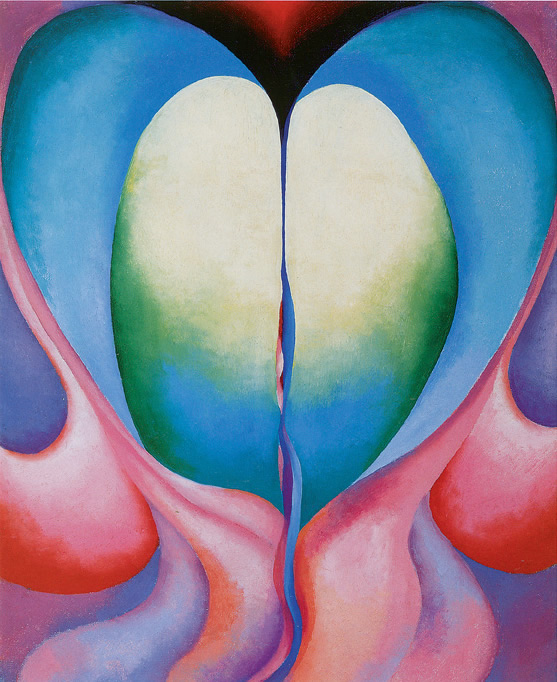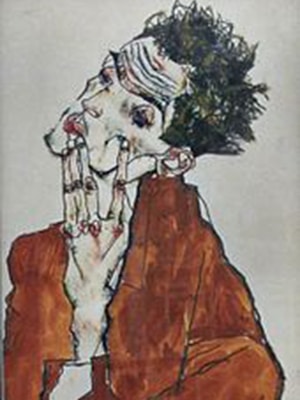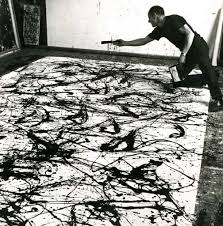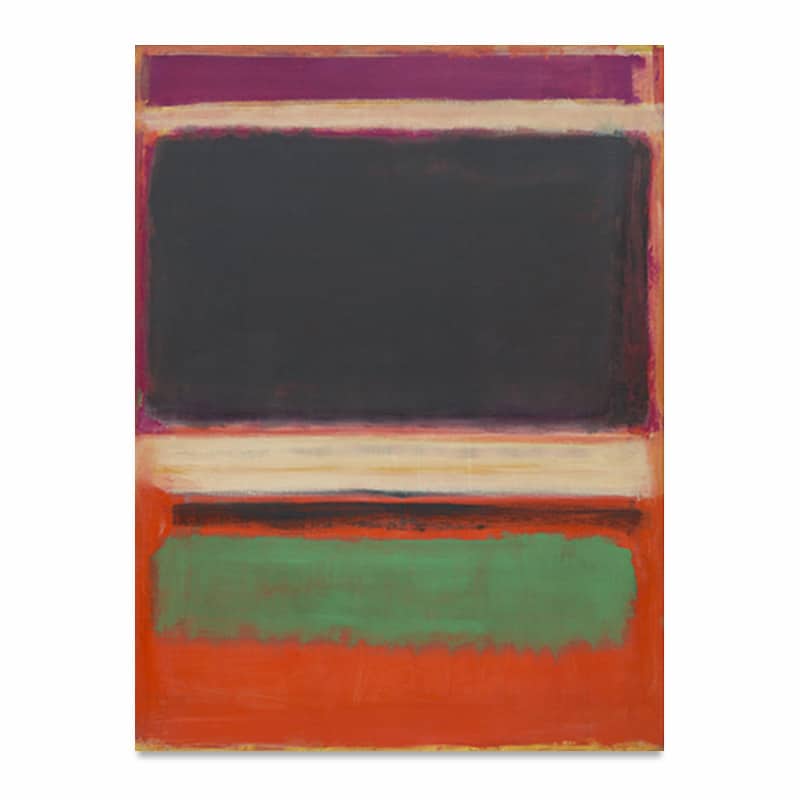This article may contain compensated links. Please read Disclaimer for more info. As an Amazon Associate, I earn from qualifying purchases.
Introduction to Modernist Artists
Modernism refers to a global movement in society that from the end of the 19th century till the 1970s sought a new alignment with the experiences of modern life. Spanning the onset of industrialization and two world wars, artists made work using fundamentally new subject matter, painting techniques, and materials to respond to radically shifting conditions and to express their hopes and dreams of the modern world.
Not only the works produced in this period reveal the societal changes, also their personal journeys and struggles are striking reflections of these unprecedented challenges in culture and society. Read on to learn about the stunning lives of eight artists of the modern period.
Paula Modersohn-Becker (1876 – 1907)
by Alexander
German artist Paula Modersohn-Becker’s ground-breaking life and work expose the restrictions imposed on women artists in the early 20th century. Inspired by the style of Post-Impressionism, her starting point was to investigate and learn from everyday life with a focus on the female experience, creating un-idealized paintings of young girls, old women, and especially expectant and new mothers. She further painted landscapes, still lifes, and domestic scenes, but it was portraits of women, that occupied her artistic imagination the strongest.
Modersohn-Becker came of age at a time when German artists moved away from academic conventions towards looser brushwork and a focus on shifting qualities of light which was characteristic of French Impressionism. With only little support of her family, she began painting when she was 16, studied in London and Berlin, and, against her father’s will, settled in an artist’s colony in the northern German town of Worpswede, where she sought to live closer to nature and escape industrialization. At the colony, she met her future husband, Otto Modersohn.
Using a subdued, earthy palette and applying thick surfaces of impasto, she avoided conventional beauty. But not only in her handling of paint did she subvert the norms. She worked as a professional female artist at a time when women were expected to be mothers and wives. And she portrayed women in a way that offended traditional standards of femininity, often showing sturdy bodies in awkward positions and saucer-like eyes.
Modersohn-Becker was unhappy in her marriage and avoided becoming a mother, afraid she might not be able to focus on her career as an artist. She regularly spent longer periods of time in Paris, where she would learn from the avant-garde, meeting artists like Paul Cézanne, Paul Gauguin, and Vincent van Gogh. Through these influences, she developed her own style which was close to the later German Expressionism. Changing her mind about motherhood, she went back to Worpswede. She died only days after giving birth to a daughter of complications when only 31 years old. Modersohn-Becker left behind a vast correspondence with artist friends and many diaries, giving us insights into her desire to be respected as a woman artist.
Marc Chagall (1887 – 1985)
Marc Chagall was born in the small town of Vitebsk, Russia in 1887. The son of a poor Jewish herring merchant, he studied Hebrew and the Bible in the school he attended. He became interested in art after watching a fellow student draw. He then moved to Paris in 1910 to further study art where he suffered homesickness. His dreams of his home influenced his art with images of his fiancé, cows, fish, and other country scenes. Unlike other artists of the time, Chagall did not succumb to Paris nightlife. Instead, he painted all night and then would sleep for a few hours each morning. His paintings were images of his dreams of home which were a precursor to surrealism.
Chagall returned to Russia prior to the First World War to marry his fiancé but was unable to leave once the war began. While in Russia he began to build a name for himself as a set designer and illustrator which led to special privileges for him during the Russian Revolution. Eventually he returned to Paris with his wife and child creating a buzz with his unique style of modern art based on Jewish culture and his Russian heritage.
So consumed by his work, he failed to notice what was happening around him during the Nazi regime. By the time he realized the danger he and his family were in, it was too late to leave. The Chagalls were stripped of their citizenship and arrested. Fortunately, there was a movement in America to rescue artists from Europe. In May of 1941, the Chagalls escaped to the U.S. where Chagall’s wife died soon after from a virus.
He eventually returned to France where he continued his work. Not limited to paintings, Chagall also created sculptures, stained glass for cathedrals, wall tiles, vases, large murals, mosaics, and tapestries. He was even commissioned to illustrate the Old Testament of the Bible and spent several months in the Holy land. His work also includes the ceiling of the Paris Opera House.
Vincent van Gogh (1853 – 1890)
by Alexander
Vincent van Gogh is one of the renowned post-impressionist artists, best known for his striking use of colour, emphatic brushwork, and contoured forms. As a son of a pastor, the Dutch artist war brought up in a religious and cultured atmosphere in the Netherlands. From early on, he was highly emotional, lacked self-confidence, and struggled with his direction and identity. Van Gogh first decided to work as a clerk at a bookstore, and then as a salesman, both unsuccessfully. He believed that his true calling was to preach the gospel. Yet he was soon dismissed as a preacher in Belgium for overzealousness.
It was only after 1860 and 1880 that the finally decided to study art and become an artist. Van Gogh was determined to bring happiness to other people by creating beautiful art works. Much is known about his thoughts through a collection of over 900 surviving letters written and received by the artist, more than 650 of these were from van Gogh to his brother Theo.
In 1886 van Gogh went to Paris to join Theo who was the manager of Goupil’s gallery. There he met other influential artists like Pissarro, Monet, and Gauguin, and tried to copy their Impressionist style. On this basis, he developed his own bolder Post-Impressionist approach using bold colours and dramatic, impulsive, and expressive brushwork. Within just ten years, he created over 2,100 artworks, including still lifes, landscapes, portraits, and self-portraits, contributing to the foundations of modern art. He was not commercially successful in his lifetime.
Vincent van Gogh arrived in Arles in 1888 to focus on landscape painting and the effects of sunlight after two years in Paris. He soon decided to rent rooms in the “Yellow House” on Place Lamartine in Arles to establish a collaborate “artist colony” with other artists. However, the first and last to move in with him would be Paul Gauguin.
Most art historians agree that van Gogh most likely committed suicide in the summer of 1890, just a few days after he painted his famous work “Plain near Auvers”. A newer but highly controversial theory puts forth, that he might have been shot by a young boy who liked to pester the artist. The landscapes painted in the weeks preceding his death have been widely interpreted as reflecting van Gogh’s inner emotions and thoughts. Apart from art historians, the pictures in combination with the letters he wrote to his brother, his sister, and his mother have further served psychologists as materials for studying mental health issues.
Diego Rivera (1886 – 1957)
Diego Rivera was a Mexican painter famous for murals that employed a style of social realism. However, as a young man he spent 15 years in Europe where he rubbed shoulders with contemporary artists and experimented in different styles. From 1913 to 1917, the artist produced a number of works that helped influence the cubism movement.
In Paris, Rivera moved in a social circle that included the likes of Pablo Picasso, Amedeo Modigliani, and Georges Braque. Pablo Picasso and Diego Rivera quickly became close friends who would discuss art in their native Spanish at social gatherings late into the night. That is until Rivera accused Picasso of copying one of his paintings.
Picasso and Rivera both would move freely through one another’s work studios. Diego noted that Picasso spent a suspect amount of time observing what would become Paisaje Zapatista. Not long after that, Rivera found Picasso’s almost finished, Man Seated in Shrubbery. Even though Picasso claimed the painting had been finished for months, a smudge of wet paint contradicted the assertion. Rivera was furious with Picasso and the conflict broke the cubist movement into two different factions.
The irony of the whole situation is that Rivera was painting in a style attributed to Picasso and Braque. Today we attribute a quote to Picasso about good artists copying and great artists stealing. Neither of the great egos would back down and a feud began. Picasso ended up making so many changes to the painting, essentially deleting Rivera’s influence, he even changed the name from Man Seated in Shrubbery to Seated Man.
Both artists leveraged the feud into massive publicity. It is interesting how Rivera would replicate these feuds later in life. Pablo Picasso, John D. Rockefeller Jr., the Catholic Church, and even Joseph Stalin played right into his games.
Georgia O’Keeffe (1887–1986)
by Alexander
As woman artist at the forefront of American modernism, Georgia O’Keeffe is one of the most well-known female painters in history. Her early work led to bold experiments in abstraction, contrasting the dominant movement of American realism. The theories of Russian artist Wassily Kandinsky strongly inspired O’Keeffe to explore the idea that music could be translated into something visual, to achieve pure expression free of external references. She further is known for her large and evocative flowers and skull paintings, as well as for American southwestern landscapes and New York City scrapers.
O’Keeffe grew up on a farm in Wisconsin as the second of seven children. Her mother encouraged her to become well-educated and supported Georgia’s curiosity about the natural world and her interest in art. Her family arranged lessons with a local artist at an early age. Art appreciation was common in the O’Keeffe family – both her grandmothers and two of her sisters were also painters.
After graduating from high school in 1905, Georgia O’Keeffe was determined to make her way as an artist. She studied at the Art Institute of Chicago and the Art Students League in New York, where she acquired skills and techniques of realist painting. Her artistic style changed vehemently towards abstraction when she studied the revolutionary ideas of Arthur Wesley Dow. Through a series of charcoal drawings, she developed a unique language to express her ideas and feelings, which attracted public attention. Art dealer and photographer Albert Stieglitz, who eventually became O’Keeffe’s husband, was the first person to display her work in 1916. Stieglitz was 23 years older than O’Keeffe, and found in her a muse, taking over 300 photographs of her, including both nudes and photographs. She joined Stieglitz circle of artist friends including Marsden Hartley, Arthur Dove, and Paul Strand and was strongly inspired by the vibrancy of the modern art movement she got to know. It was at this time that she began to experiment further with perspective, painting large scale close ups of flowers.
During the 1920, O’Keeffe was widely recognized as a prominent women artist, renowned for her symbolic skyscraper pictures and the radical depiction of flowers. In 1929, O’Keeffe made her first trip to New Mexico, where the stark landscape and the Hispanic culture inspired a new direction in her art. She would spend most summers living and working in New Mexico for the next two decades and made the state her permanent residence in 1949 after Stieglitz’s death. During the 1950s, she travelled internationally and painted many places she visited, including Japan’s Mount Fuji and the mountain peaks of Peru. Suffering from failing vision, O’Keeffe painted her last unassisted oil painting in 1972.
Egon Schiele (1890 – 1918)
by Alexander
Austrian painter Egon Schiele was a figurative painter of the early 20th century and an early exponent of Expressionism. He is best known for his artwork depicting erotic themes and sexuality, using an expressive line. He was born in the Austrian town of Tulln as one of seven children. Yet he was the only surviving boy among three sisters. When Schiele was only 14 years old, his father died of syphilis, and he became a ward of his maternal uncle, Leopold Czihaczek.
From early on, Schiele drew obsessively and later took classes at the Academy in Vienna, where he became a protégé of Gustav Klimt. He was also strongly influenced by the work of Edvard Munch and Vincent van Gogh, further refining his fluid line and the twisted body shapes characteristic for his paintings.
The human figure provided Schiele with his most important subject matter for his drawings and paintings. His portraits are famous for being much more than mere representations, but rather searing explorations of the models’ psyches and sexuality, as can be seen in his most famous painting Death and Maiden. The same is true for his numerous psychologically complex self-portraits, often showing himself as an emaciated, tortured figure with bony and angular body shapes.
Schiele had a strong affinity for painting slender women. He claimed himself, that in only 8 months he had over 180 different women, many of them Viennese prostitutes, posing for him in his studio. After getting married to Edith Harms, he initially confined himself to working only with her as a model, making his style become more naturalistic, perhaps a consequence of the tenderness and intimacy he shared with her. However, he soon asked her sister Adele to model for him, since Edith’s body had changed, and she was no longer as thin and fragile as Schiele liked his models. Adele later claimed that her relationship with Schiele was not as chaste as it would have been appropriate.
Schiele had tried to avoid conscription for the First World War but was drafted for military service in Prague briefly after his marriage. His military service limited the time spent on art, although he was still exhibiting successfully in art shows in Berlin, Zürich, Prague, and Dresden. In 1917, Schiele finished his service, arrived back in Vienna, and could now fully focus on his artistic career. He produced some of his most mature work, among them “The Embrace”. Even if still working with nudes, the intensity of his work was now dampened, and the grotesque, pornographic, and disturbing elements reduced. At the 49th exhibition of the Vienna Secessionists in 1918, Schiele was asked to exhibit 50 of his works in the main hall, which was a great success for him and increased the prices for his artwork.
Just one year after returning to Vienna, Edith became pregnant. However, she succumbed to the Spanish flu pandemic in the autumn of 1918. Schiele died only three days after her when he was only 28 years old.
Jackson Pollock (1912 – 1956)
Jackson Pollock is an abstract artist best known for his massive and inspirational drip paintings. Critically acclaimed for his novel approach of flinging paint onto canvas, his works convey a sense of movement and fluidity that were ground-breaking in the world of fine art.
Although his approach to abstraction was revolutionary, his personal life was fraught with strife and addiction. He grew up under the abusive hand of his alcoholic father, who left when he was still a young child. His father’s departure jumpstarted his interest in art, as his brother Charles, and artist, became like a surrogate father to him.
Coming of age in the depression, Pollock was able to secure work through Roosevelt’s Public Works of Art Program. Unfortunately, he was unable to break the cycle of addiction that plagued his father. He drank heavily but also sought treatment for his addiction. During his sober years, he found love and moved to the country, where he developed his iconic drip paintings.
The drip paintings were prominently featured in Life Magazine in 1949, and this feature catapulted Pollock to world-wide fame.
Fame was not kind to Pollock. When his drip paintings broke into the mainstream, he became one of the most widely celebrated artists of his time. He became arrogant and self-important, while his friends and contemporaries became resentful of his success and overly critical of his work. He soon found himself friendless and returned to drinking to ease the pain.
The return to drink caused problems in his love life, and his marriage soon dissolved. His addiction ultimately killed him, as he died after crashing his car into a tree while drunk.
Pollock is an interesting case study of the life of an artist. He doesn’t embody the stereotype of the starving artist, and he was celebrated during his time. He couldn’t handle the fame, and it led to his untimely destruction.
Mark Rothko (1903 – 1970)
By Alexander
Mark Rothko is closely associated with the New York School of Abstract Expressionism, a circle of painters that emerged during the 1940s as a collective voice in American art. During his career spanning five decades, he created a new form of abstract art.
Rothko was born in Daugavpils, Latvia, into a highly educated family and was provided with a secular and political upbringing. At the age of five, he went to cheder, where he studied the Talmud. With Jews being blamed for many of the evils that befell Russia, Rothko’s early childhood was dominated by fear. The family emigrated from Russia to the United States in 1913, where Rothko went to high school in Portland, Oregon. Outstanding results enabled him to attend Yales on a scholarship, but he decided to drop out two years later. He started a satirical magazine lampooning the school’s bourgeois tone and finally found his place in New York where he studied at Parsons School of Design under painter Arshile Gorky, who shared Rothko’s interest in biomorphic forms of European Surrealism. For Rothko, these forms would ultimately give way to the floating zones of colour over coloured grounds, the colour field paintings, for which he is best known for. Rothko spent the rest of his career exploring the limitless possibilities of layering variously sized and coloured rectangles onto fields of colour.
Towards the end of the 1960s, Mark Rothko’s health was in decline due to anxiety-related drinking habits. He survived an aneurism but continued his unhealthy lifestyle despite the doctor’s orders. To put less strain on his body, he reduced the size of his canvases and switched from oil to acrylic paint. At the age of 66, the chronically depressed artist committed suicide, leaving behind a body of work that brought him commercial and critical success during his lifetime.
You might also enjoy reading the following posts by Pigment Pool:
Literature for Artists and Art Enthusiasts – 16 Essential Books on Modern Art 2021
A brief history of colour pigments
The Best Acrylic Paint Set for Artists and Hobbyists In 2022
The Best Drawing Pens for Artists and Hobbyists in 2022

